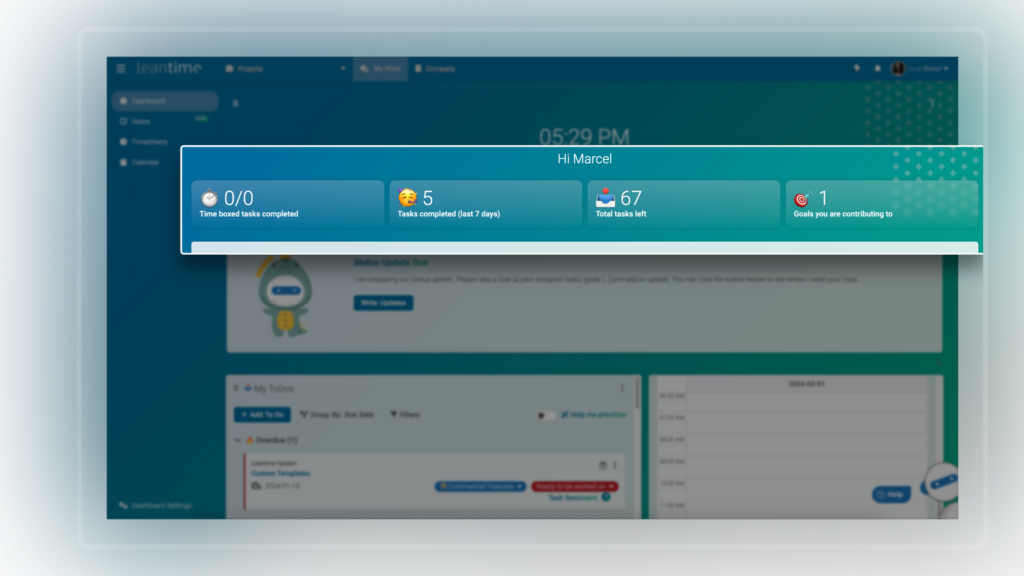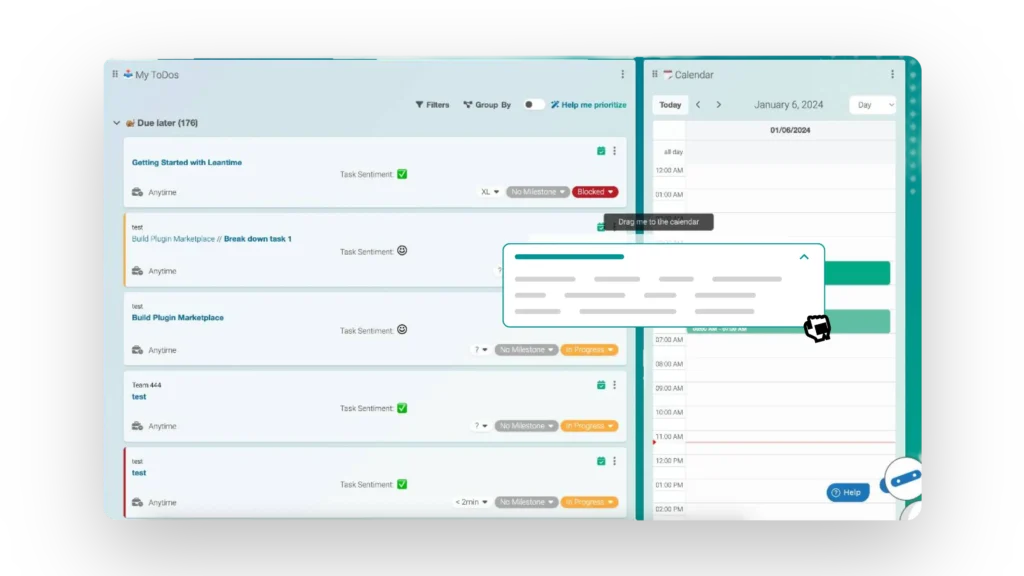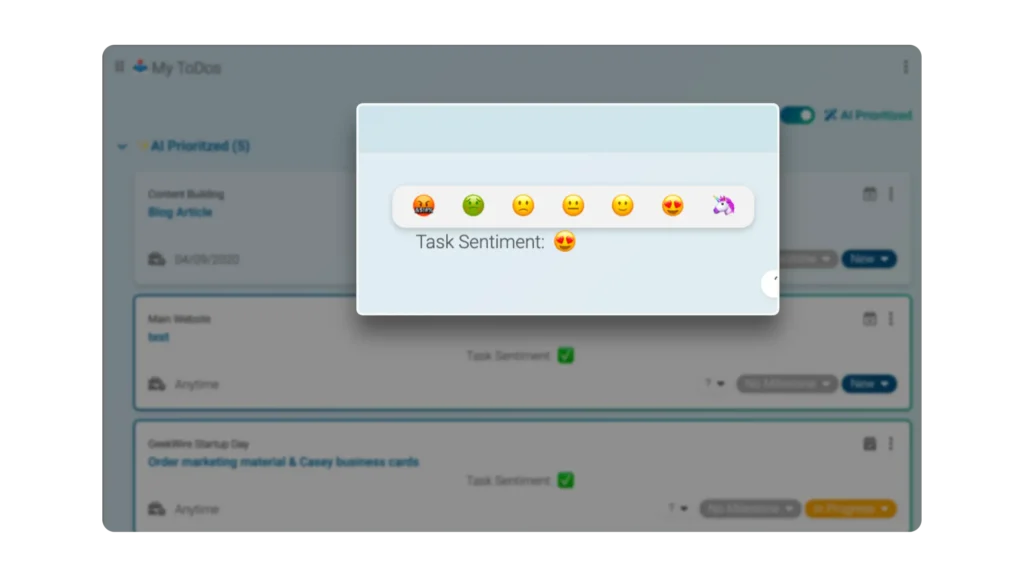Office politics can be a tricky and an often dreaded aspect of the workplace. But what if I told you that calling it office politics is a complete misnomer? One that actually worsens the divide that “office politics” innately creates – and clearly, it’s not about political parties or government policies either.
Office politics is a maladaptive response, either as a collective or individually, to the differences in the way our brains differ, experience, and process the world – and this response is rooted in years of domination culture, cognitive and information overload, and in the declining state of empathy in the workplace.
Table of contents
The Impact of Office Politics
Understanding office politics and navigating team dynamics are said to be crucial to success in the workplace. It can mean the difference between getting that hard earned promotion, to being laid off because you’re the black sheep of the group.
The message sent with cultures driven by politics is that you must “fit in” in order to be successful. There’s a standard in which you must measure up against.
So the ask becomes: Focus on your work, manage large amounts of ambiguity, and support the day-to-day of a growing organization … AND THEN also
- Recognize and navigate the differences in hierarchy across teammates,
- Communicate across departments,
- Acknowledge existing power struggles,
- Navigate the competition for resources…
… and the personal insecurities that can arise within an organization as a result.
This expectation quickly turns into an environment that, once, had the potential to be collaborative, engaging, team building, respectful… into a sport or a game – where there are clear winners and losers.
The problem with this model is that, in the work environment, there should be no clear winners or losers. There are leaders, mentors, and there are individuals coming together to create a new version of the world… by creating solutions that impact and change the lives of their consumers.
The Differences in our Brains, The Differences in How We Work
When there are distinctions such as winners and losers in the workplace, it creates exclusion and we can physically see this through the historical racial disparities and other examples. As our workplaces evolve, however, there are forms of diversity that we can’t see that are more likely to get singled out – or to “lose.”
Cognitive diversity, or neurodivergence, refers to the idea that there are differences that occur in our brains and result in patterns of thought that we identify as Autism, Dyslexia or ADHD. There are other conditions in this category and they are all natural variations of the human brain and should be respected and valued.
In many forms of neurodivergence, communication patterns and approaches can be different. For example, someone with ADHD may talk quickly and be prone to interrupting others when they are talking. This can occur because their brains are running fast and they are filling in the conversation quickly or due to impulsivity.
Someone who is Autistic may be more blunt and direct with their language. They may not engage in typical small talk and this can result in being excluded.
These differences, however, are clear anti-patterns to the “fit in” required and the perspectives that come with them will also stand out.
A recent study discussed how Autistics were less likely to be influenced by the bystander effect and are more likely to confront or report situations. While this may feel confrontational, in an organization – it has benefits that extend across decreasing technical debt, aligning product requirements, or even supporting accountability across teammates.
So, how do we navigate the team and human dynamics of managing projects while embracing neurodiversity? How can we create an environment that minimizes the negative effects of office politics and promotes collaboration and productivity? These are the questions we’ll explore in this blog.
Neurodiversity in the Workplace: Embracing Differences for Success
The differences in our brains, however, come with strong benefits however.
- Cognitively diverse teams were more than 3x faster at solving problems (Harvard Business Review)
- These cognitive differences were also shown to increase innovation as much as 20% (Deloitte)
- Neurodivergent friendly companies have also been shown to see 28% higher revenue, 30% greater profit margins and 2x net income.
By embracing our cognitive differences, organizations can promote diversity, inclusion, and innovation in the workplace. For companies looking to be successful, these numbers can be the difference between a thriving organization and a failing one.
The Uniqueness of Neurodivergent Individuals
- ADHD: Heightened creativity, problem-solving skills, and the ability to hyperfocus on tasks
- Dyslexia: Excellence in visual thinking, pattern recognition, and spatial awareness
- Autism: Exceptional attention to detail, analytical thinking, and a unique perspective on problem-solving
Neurodivergent conditions, such as ADHD, dyslexia, and autism, are prevalent in the workplace with statistics currently as high as 1 in 5 people. These conditions bring unique strengths and perspectives to the team.
However, neurodivergent individuals may face additional challenges in understanding and navigating office politics due to different communication and social interaction styles. They may struggle with honoring social cues, understanding unwritten rules, and fitting into traditional office environments. This can lead to misunderstandings, conflicts, and feelings of exclusion.
Office politics are reactions to the uncertainty and “different” that arises with these variances in perspective and communication. When cultures are framed to look towards power dynamics, like mindedness, and favor resource competition, the individuals with these strengths get alienated and ultimately end up leaving.
Supporting our Cognitive Differences
To create a successful workplace that embraces neurodiversity, it is essential to address office politics and work towards an environment that celebrates different perspectives through
- psychological safety,
- direct communication,
- expectation management,
- leadership driven vulnerability.
Managers and colleagues play a crucial role in fostering an inclusive environment by promoting open communication, empathy, and respect for diverse perspectives.
What exactly are Office Politics?
Office politics refer to the strategies, maneuvers, and behaviors employed by individuals or groups within a workplace to gain advantages, influence decisions, and advance their own interests. It often involves the use of tactics such as networking, manipulation, gossiping, forming alliances, and power struggles.
Office politics can manifest in various ways, including:
- Competition for Resources: Employees may engage in office politics to secure access to limited resources such as budget allocations, promotion opportunities, or desirable projects.
- Influence and Power Dynamics: Individuals may seek to enhance their influence and power within the organization by aligning themselves with key decision-makers, building alliances, or undermining their competitors.
- Gossip and Rumor Mill: Rumors, gossip, and informal communication channels can be used to spread information, tarnish reputations, or gain leverage over others.
- Cliques and Factions: Groups of employees may form cliques or factions to protect their interests, promote their agendas, or exclude others from decision-making processes.
- Sabotage and Undermining: Some employees may engage in sabotage or undermine their colleagues to gain a competitive advantage or advance their own goals.
- Perception Management: Office politics often involves managing one’s image and perception within the organization, sometimes at the expense of others.
- Nepotism and Favoritism: Nepotism, favoritism, or bias in decision-making processes can contribute to perceptions of unfairness and fuel office politics.
While some level of office politics is inevitable in any workplace, excessive politicking can have negative consequences, including decreased morale, increased stress, reduced productivity, and damage to relationships and trust within the organization. It’s important for employees and leaders to be aware of office politics and strive to maintain a fair and transparent work environment.
Dispelling Myths About Office Politics
To truly understand office politics, it is important to dispel some common myths surrounding this topic. First and foremost, office politics should not be seen as inherently negative or manipulative. Rather, it refers to the strategies and tactics individuals use to gain power and influence within an organization.
There is a human tendency to assume the worst in others or to assume ill intentions and the reality is that – often, people do not fully understand the behaviors they’re engaging in and many are often social and hierarchical constructs carried over from much earlier days.
In fact, the research supports that only 36% of people are able to correctly identify what they are feeling as they are feeling it.
Understanding that people are influenced by their upbringing, environment, families, stress, and even their personalities is the very first step to creating a mindful workplace – one that empowers people into their strengths as opposed to trying to fit standards they do not fit.
The Impact of Office Politics in Virtual Environments
In today’s digital age, office politics is not limited to physical workspaces. It can also exist in virtual work environments, where communication and team dynamics can be more challenging. In fact, virtual teams need to be even more aware of office politics and actively work towards fostering a positive and inclusive work culture.
In a virtual setting, office politics can manifest in different ways. Miscommunication and misunderstandings can occur more frequently due to the lack of face-to-face interaction. Team members may feel isolated or excluded, leading to a breakdown in trust and collaboration. Additionally, power dynamics may be more difficult to navigate when there are limited opportunities for informal interactions.
To mitigate the impact of office politics in virtual environments, it is crucial for teams to prioritize effective communication, expectation management and transparency. Regular team meetings and one-on-one check-ins can help foster a sense of belonging and ensure that everyone has a voice. Creating opportunities for social interactions, such as virtual team-building activities, can also help build rapport and strengthen relationships.
Organizations should provide resources and support for virtual teams to navigate office politics. Training programs on effective virtual communication, conflict resolution, and team dynamics can equip team members with the skills they need to navigate the challenges of remote work.
Office politics is a complex and multifaceted phenomenon that exists with the nature of our humanity. Understanding its nuances and dispelling myths surrounding it is crucial for individuals and teams to thrive. Whether in physical or virtual environments, office politics can have a significant impact on job performance, career growth, and overall job satisfaction.
The Role of Empathy in Navigating Office Politics
Empathy plays a crucial role in navigating office politics and building strong relationships with colleagues. By developing empathy skills, managers can create a psychologically safe environment that enhances collaboration and teamwork. Empathy also fosters innovation and drives positive changes in the workplace.
Tips for Navigating Office Politics Effectively
- Prioritize developing nurturing work relationships
- Stay positive and focused on your contributions
- Be mindful of topic pain points
- Continuously improve your political savvy
- Stay engaged in respectful debates
The Importance of Clear Communication in the Workplace and in Work Management
Clear communication is essential for effectively navigating politics and managing the work. It ensures that everyone understands their roles, responsibilities, and project goals, leading to organized and successful outcomes. Without clear communication, projects can become disorganized, resulting in confusion, delays, and ultimately, failure.
Establishing a Shared Understanding
One of the key benefits of clear communication is that it establishes a shared understanding among team members. When goals are clearly communicated, everyone knows what is expected of them and can work towards a common objective. This helps to avoid misunderstandings, ensures alignment and even promotes motivation.
Using Concise and Specific Language
Using concise and specific language is crucial in articulating the goals of any project. Ambiguity and vague language can lead to confusion and misinterpretation. By using clear and precise language, project managers can effectively communicate their expectations and ensure that team members have a clear understanding of what needs to be accomplished.
Enhancing Clarity with Visual Aids
Visual aids, such as diagrams or charts, can enhance understanding and clarity. They simplify complex concepts and provide a visual reference for team members to refer to. Visual representations are especially helpful for visual learners who may struggle with understanding purely written or verbal instructions.
Regular Updates and Clarification of Expectations
Regular updates and clarification of expectations are essential for maintaining clear communication throughout the project. A designated manager, project manager or team member should provide frequent updates to keep team members informed of any changes or progress. Additionally, clarifying expectations and addressing any questions or concerns can help prevent later stage conflict.
Strategies for Crucial Conversations
In addition to clear communication of project goals, having strategies for crucial conversations is important. These conversations address challenges or conflicts that may arise during the project. Preparing for crucial conversations involves identifying the desired outcome and anticipating potential challenges or objections.
Active Listening and Empathy
Active listening and empathy are vital skills for successful crucial conversations. It is important to truly understand others’ perspectives and validate their feelings and concerns. By actively listening and showing empathy, project managers can foster a collaborative and constructive environment for resolving conflicts or addressing difficult topics.
Maintaining a Calm and Constructive Tone
Maintaining a calm and constructive tone during crucial conversations is essential. It is important to remain composed and avoid becoming defensive or confrontational. By keeping emotions in check and focusing on finding solutions, teams can create an environment that encourages open and honest communication.
It’s important to remember that we are all working towards a common goal and we all work better when we’re working together.
Clear communication is crucial for effective work management . It ensures that everyone understands their roles, responsibilities, and company goals.
How Leantime Supports Cognitive Diversity At Work
Leantime is a people-first and open-source project management software that helps teams streamline their project workflows. With its user-friendly interface and robust features, Leantime is designed to cater to the needs of neurodivergent individuals, considering their unique communication and work styles.
Understanding Neurodivergence
Neurodivergence refers to the natural variations in the human brain, such as ADHD, dyslexia, and autism. These conditions can present challenges in traditional work environments, where communication and organization play a crucial role. Leantime recognizes the importance of accommodating diverse strengths and opportunities, making it easier for neurodivergent individuals to navigate the team dynamics of managing projects.
Leantime uses behavioral science, AI, features and design work in order to support the unique ways our brains process information as it relates to work.
For example
- Dopamine (motivation neurotransmitter) is secreted on the way to accomplishing a goal – not when you get to the goal.

Whether your brain processes dopamine differently or not, it’s important to be able to relate tasks back to the milestones and goals that you are contributing to. Leantime incorporates this both into their AI features and into every step of the project workflow and personal work organization.
- Neurodivergent individuals often relate better to the “why” we are doing something – it enables them to make better decisions and keep context to the work being done.

Leantime incorporates the “why” throughout the system – from starting at a strategy overview (one pager) highlighting the areas of work focus to the AI driven Personalized Project Description. In the project description, AI rewrites a version of the project description, relates it to your work and job title, and writes you a personalized version in one of our AI voices (Pirate, Medieval Knight or Motivational Speaker).
It’s one thing to understand what we’re working towards – it’s another to better understand your role in it.
- Many of the productivity tips for neurodivergent individuals are features built outside of their normal workflows.

Leantime connects these through incorporating Pomodoro, Time boxing, and more within your personal work dashboard.
- For someone with ADHD, it can feel impossible to start work on a task that you can’t stand.

In Leantime, we use AI and emoji sentiment to help you prioritize your work. The later version of this feature will also make recommendations on who to assign tasks to based on who likes to do certain work – allowing work to be better distributed by interest and skills instead of job description.
These are just a few of the ways that Leantime supports cognitive diversity as it comes to work management. There are also visual elements such as showing subtasks, accounting for a visual project overview, dyslexia friendly themes and even fonts.
A Comprehensive Project Management Tool
One of the key features of Leantime is its comprehensive set of tools for effective project management . The software offers features such as:
- Task management
- Milestone tracking
- Idea tracking
- Document embedding
- Reporting
Ultimately, Leantime realizes that people are naturally driven to create, build, change, and improve. We are naturally driven to accomplish goals. What we aren’t naturally driven to do: Take a process and squeeze it into a work environment that it doesn’t fit in.
In that sense, we have to make the process fit into the work environments and the way people naturally work instead and – and this is what Leantime focuses on.
Personal Organization and Productivity
In addition to the traditional project management tools features, Leantime provides features that support personal organization and productivity. Users can utilize features like:
- Time blocking
- Note-taking
- AI prioritization
- Calendar integration
These tools are especially beneficial for neurodivergent individuals who may struggle with time management and organization.
Personalized Work Experience
Furthermore, Leantime takes advantage of behavioral science and AI integration to personalize the work experience. The software aims to boost dopamine and intrinsic motivation by connecting the vision and goals of the project. By providing a personalized and engaging work environment, Leantime helps users stay motivated and focused on their tasks.
Trusted by Global Brands – because data privacy matters
Leantime is trusted by global brands and translated in 40 languages. Being an open source software empowers teams, companies, and engineers to own their data and set their own security around their software.
Cognitive diversity and neurodivergence is an often neglected conversation when it comes to software tool development but being open source is part of how Leantime views accessibility – people need to have equitable access to scalable work management.
Testimonials from successful users highlight the effectiveness and usability of the software. As an open-source project management tool , Leantime self-hosting options include easy deployment solutions using Docker, providing flexibility and convenience for users.
Using Leantime to bridge the Communication Gap during Work Management
Incorporating tools like Leantime can further simplify project management and support individuals with ADHD, dyslexia, autism, and other neurodivergent conditions. Leantime offers features to decrease overload and overwhelm, providing a people-first approach to project management. To explore the features and benefits of Leantime in managing projects, visit the Leantime website.
Conclusion
Understanding Office Politics and Embracing Neurodiversity
In today’s workplace, it is crucial to understand office politics and embrace neurodiversity in order to create a positive and inclusive work environment. Office politics, often misunderstood, are not actually politics in the traditional sense. Instead, they are the result of maladaptive responses to the differences in our brains and years of dominance culture in the workplace.
By reframing what “politics” means to us and evaluating our style against the organization’s political environment, we can navigate office politics more effectively. This can help us successfully manage projects and navigate team dynamics.



